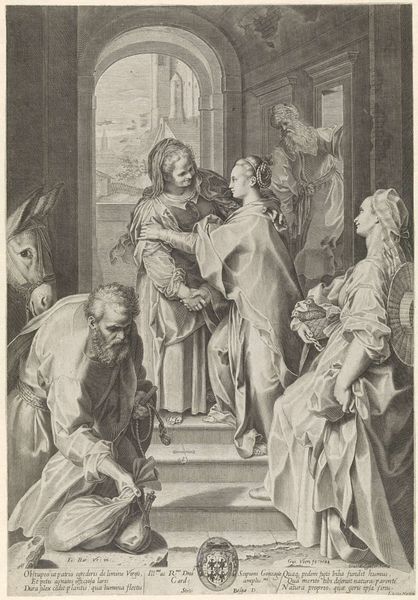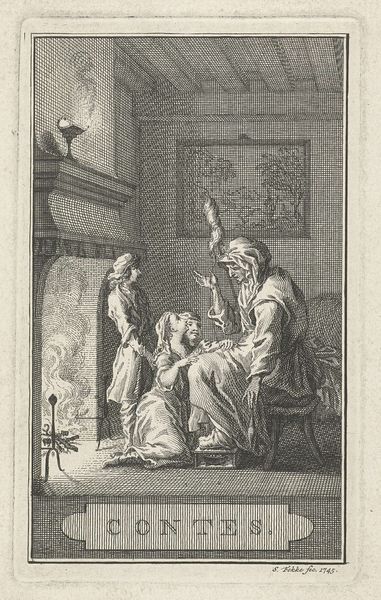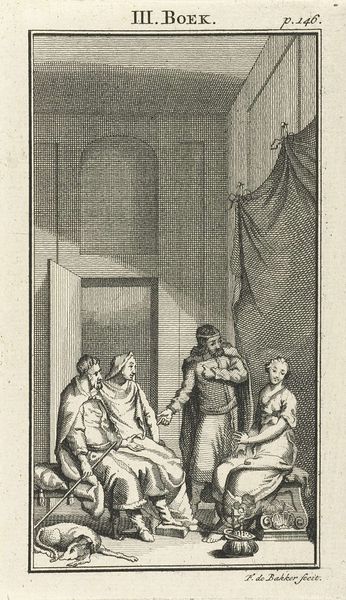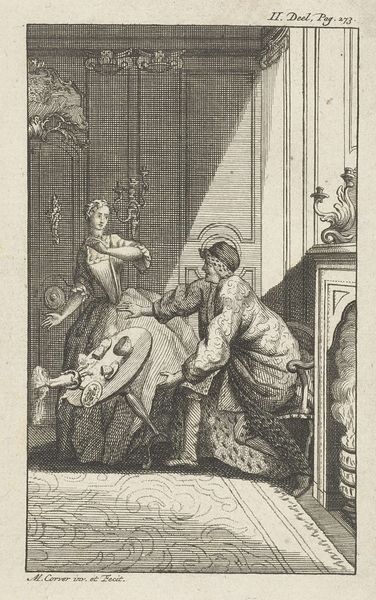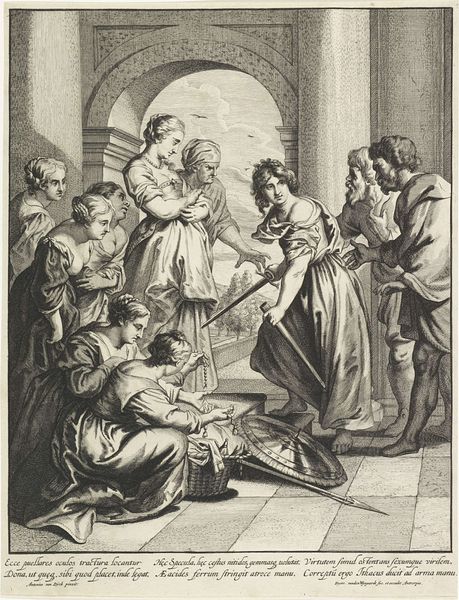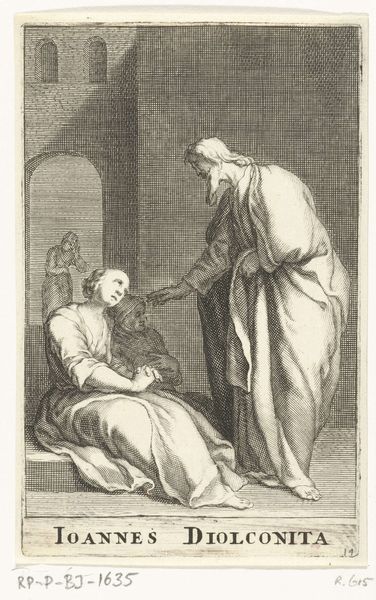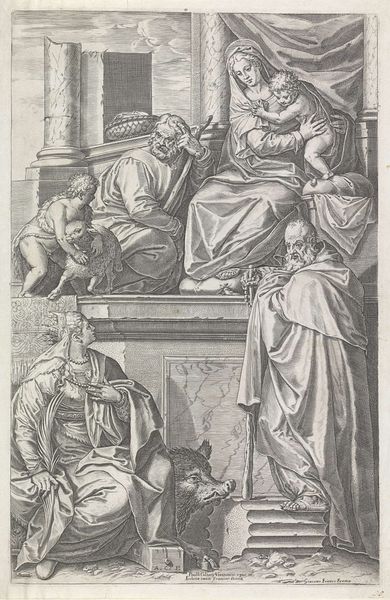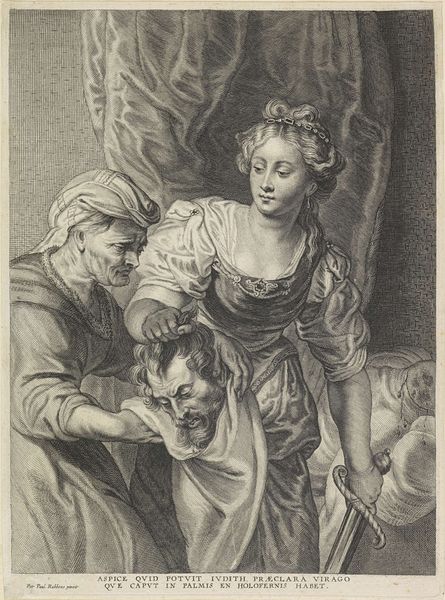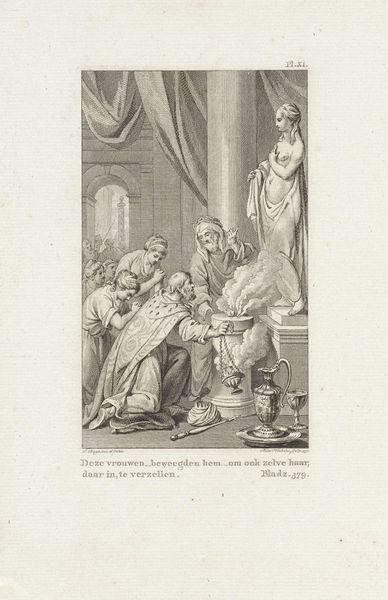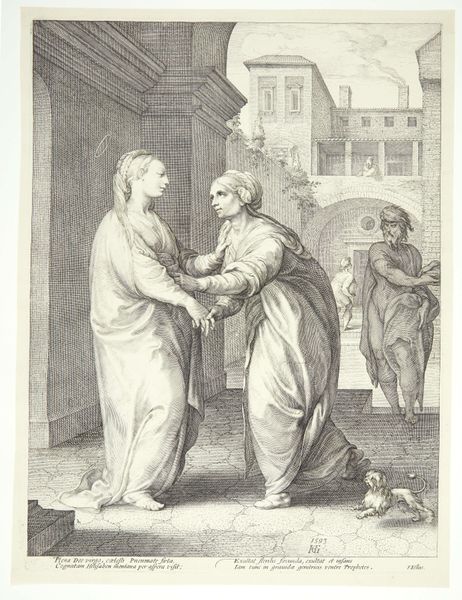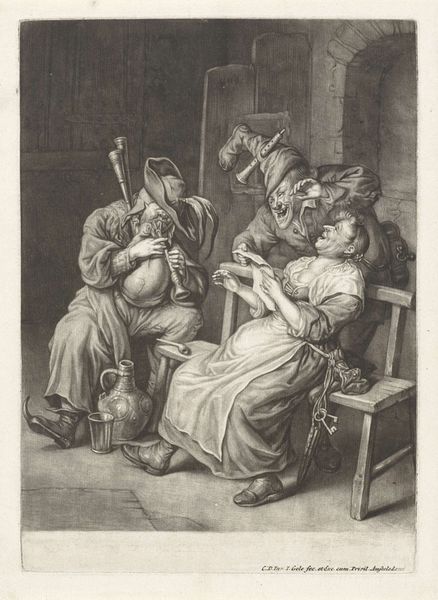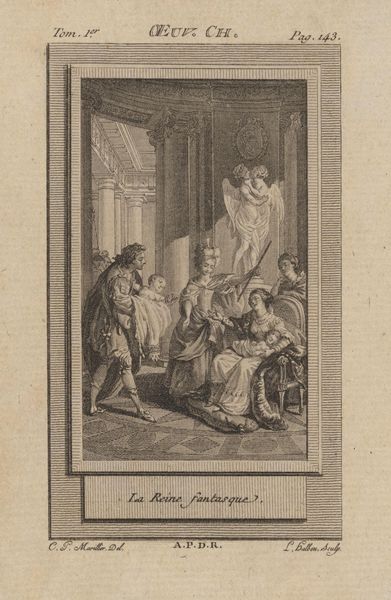
print, etching
#
narrative-art
#
baroque
# print
#
etching
#
genre-painting
#
history-painting
Dimensions: height 112 mm, width 90 mm
Copyright: Rijks Museum: Open Domain
Pieter Nolpe created this print, Reinheid en ijdelheid, or Chastity and Vanity, sometime in the early to mid-17th century. It’s an etching on paper. The scene captures a moment of moral choice. A woman kneels, caught between a richly dressed man offering earthly pleasures and a group of angels symbolizing divine grace. The Dutch Republic, where Nolpe worked, was grappling with its identity. Having won independence, its citizens had to ask themselves what kind of society they wanted to be. This image is part of a broader cultural debate. On one side, the trappings of wealth and worldly indulgence, on the other, the promise of spiritual reward. Nolpe seems to be weighing the importance of personal virtue against the seductive pull of material success in a new mercantile society. To fully grasp the print's significance, explore collections of Dutch emblem books and moralistic prints from the period. These resources show how artists used visual symbols to engage with the pressing ethical questions of their time.
Comments
No comments
Be the first to comment and join the conversation on the ultimate creative platform.
